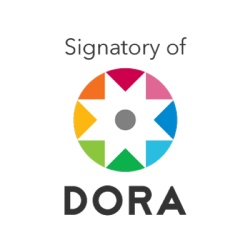تطور الزواجية في الجزائر وتأثيرها على الخصوبة
تطور الزواجية في الجزائر وتأثيرها على الخصوبة
الملخص
لقد ارتبطت ظاهرة الزواج بالعادات والتقاليد من خلال الممارسات والقيم الاجتماعية السائدة في المجتمع، لكن ما تشهده هذه الظاهرة من تحولات ما هو إلا نتيجة للتأثير الواضح للتحولات والتغيرات الاجتماعية والثقافية والاقتصادية التي تمر بها غالبية المجتمعات. وبدورها ظاهرة الخصوبة قد ارتبطت بظاهرة الزواج وأي تأثير على إحداها لا بد أن يمس الأخرى وهذا ما أكدته دراستنا من خلال التتبع لإحصائيات الجزائرية عبر مختلف الفترات الزمنية. ويظهر ذلك من خلال تطور سن الزواج الأول من فترة إلى أخرى إضافة إلى الوصول إلى نتيجة أن هنالك علاقة عكسية بين متوسط سن الزواج الأول وفارق العمر بين الزوجين حيث كلما ارتفع متوسط سن الزواج الأول تقلص فارق العمر بين الزوجين.
أشارت دراستنا إلى أنه يمكننا اعتبار متوسط سن الزواج الأول من المحددات الأساسية للخصوبة ومؤثر رئيسي في مستوياتها، لتأثيره بصفة مباشرة على عدد الأطفال الذين يمكن إنجابهم. حيث أنه كلما ارتفع السن عند الزواج الأول انخفض متوسط عدد المواليد.
التنزيلات
المراجع
CNES(1996): Etude sur la politique en matière de population.
Collection statistiques N° 50, RGPH 1987, RGPH 1998 et RGPH 2008.
données statistiques N° 554 « Evolution des mariages enregistrés et des Taux de Nuptialité » : « Démographique Algérienne, », ONS.
Enquête Algérienne sur la santé de la Famille, EASF 2002 .
Enquête algérienne sur la santé de la mère et de l’enfant 1992.
Enquête national des indicateurs multiples, « les résultats préliminaires », MICS, Algérie2006
G.becker. (1981). A treatise of the family . Cambridge. Harvard university press.
Haffad, T., & Hemal, A. (1999). La transition de la fécondité et politique de population en Algérie. (C. Université Mentouri, Éd.) Revue sciences humaines(12).
Office national des statistiques. (juin). RGPH 1998.
Série Statistiques(1989), Démographie Algérienne, n°17,. O.N.S.
Vallin, J. (1970).Les populations de l'Afrique au Nord du Sahara.population, INED.
- Arabic references in English :
United Nations Population and Development Committee. (2002).
Al-Rababah, A. H., & Al-Mughayreh, N. M. (2016). Parental Authority in Addressing the Phenomenon of Delayed Marriage Among Youth. Jordanian Journal of Islamic Studies, 12(01).
Al-Ansari, A. I. (2000). Delayed Marriage and Increased Marriage Rate (1st ed.). Cairo : Dar Al-Fikr Al-Arabi.
National Office of Statistics, Ministry of Health and Population. (1994). Algerian Survey on Maternal and Child Health 1992. Algeria : Main Report.
Taher, H. (2003). Mortality, Fertility, and Marriage in Algeria. Ceneap.
Hamza, S. A. (2005). Population and Basic Population Needs in Algeria in the Perspective of 2038.
Al-Buleihed, K. (n.d.). Reasons for Delayed Marriage. Retrieved from www.saaid.net on 19/04/2020
Ben Sadiq, Z. (2020, March 01). Factors of Delayed Marriage in Algeria and the Marital Selection Process. Concepts Magazine, 01(07), 91-100.
Ayed, W. (2006). Youth Attitudes Towards Some Traditional and Modern Aspects of Marriage : A Field Study on Male and Female Students at Mu'tah University. Educational Sciences Studies, 33(1).
Asabieh, A. A. (2006). Spinsterhood Threatens the Arab Family - Causes, Effects, and Solutions. Algeria : Dar Al-Huda.
Al-Wafi, A. R. (1996). Psychology of Marriage. Algeria : Dar Huma for Printing and Publishing.
Al-Safouh, M. A. (1976). Structure and Functions of the Jordanian Family : A Field Study of the Reality of the Syrian Family. Damascus: Publications of the Ministry of Culture and National Guidance.
Nawwab Al-Din, A. R. (1995). Delayed Marriage, Its Causes and Dangers (1st ed.). Saudi Arabia : Publishing and Distribution House.
Barkan, Y., & Hadji, F. (2014). A Standard and Analytical Study of the Problem of Poverty in Algeria (1990-2012). International Conference on Evaluating Poverty Reduction Policies in Arab Countries in the Era of Globalisation (p. 749). Algeria.

هذا العمل مرخص حسب الرخصة Creative Commons Attribution-NonCommercial 4.0 International License.









